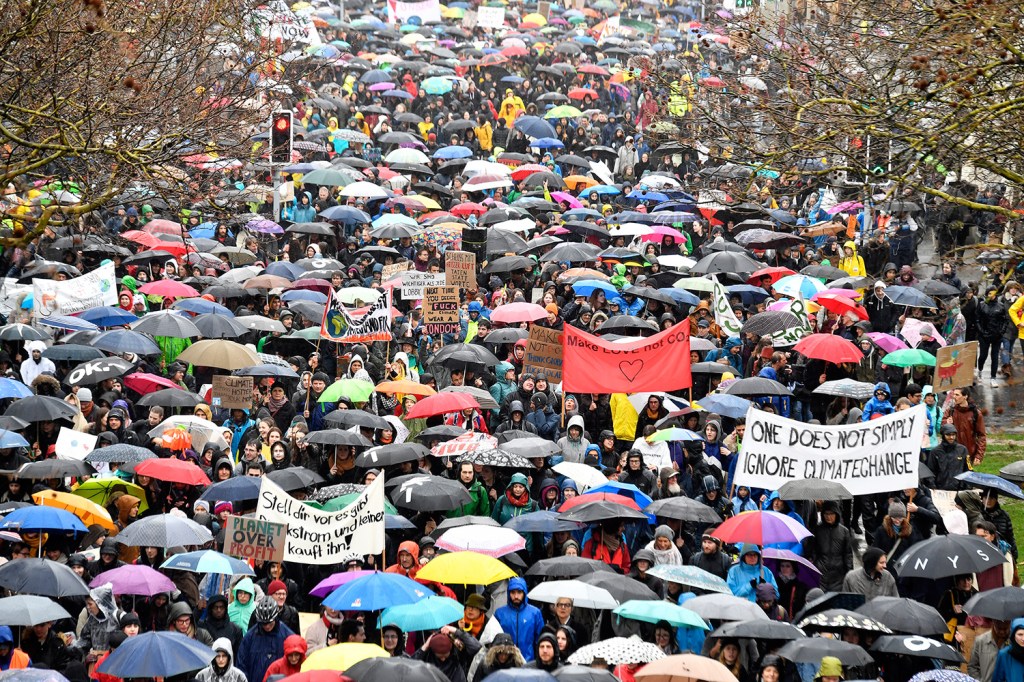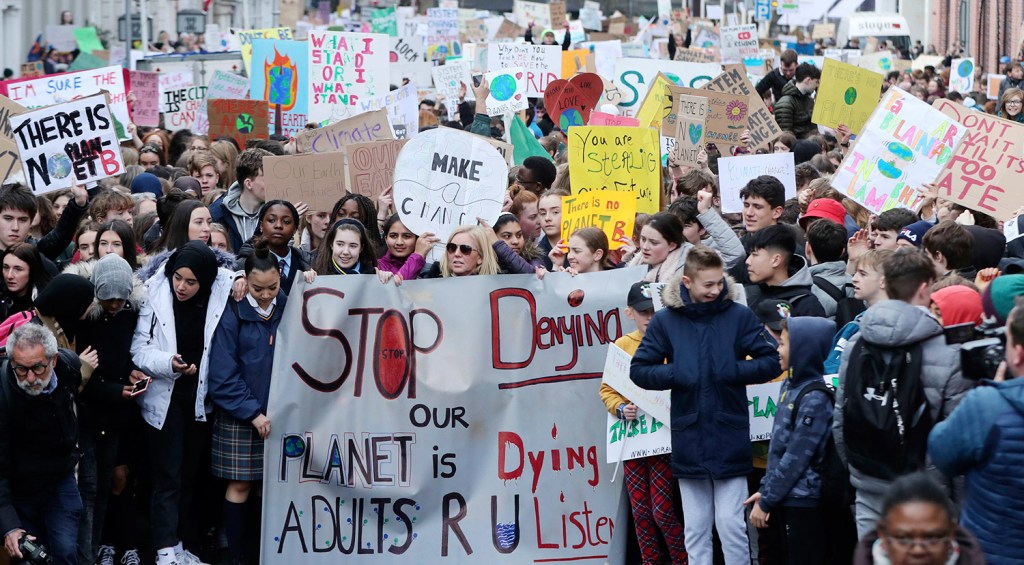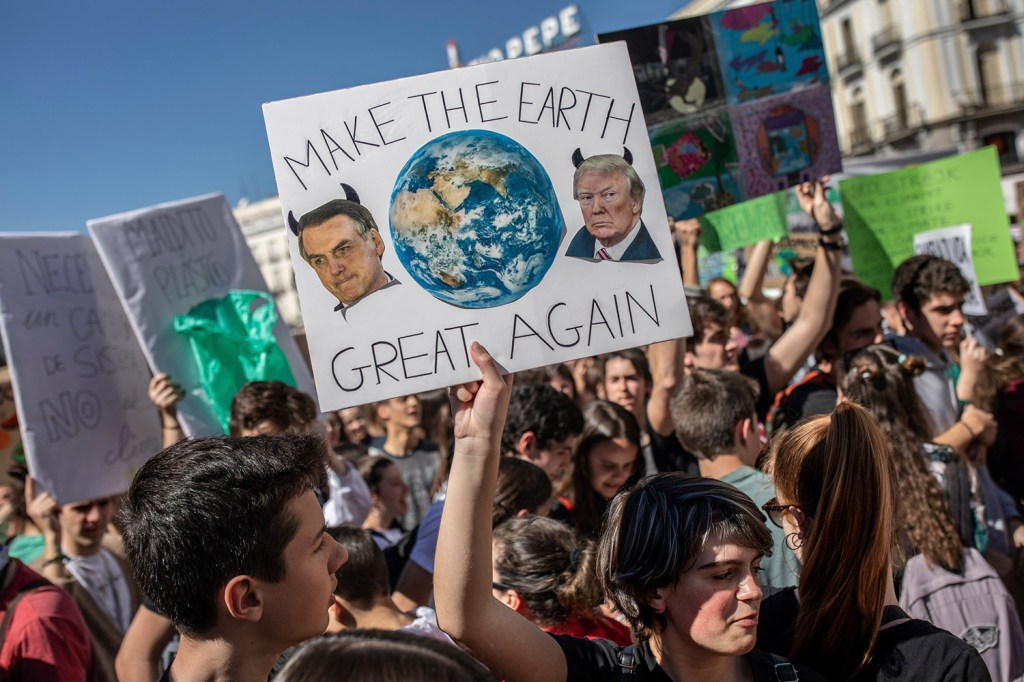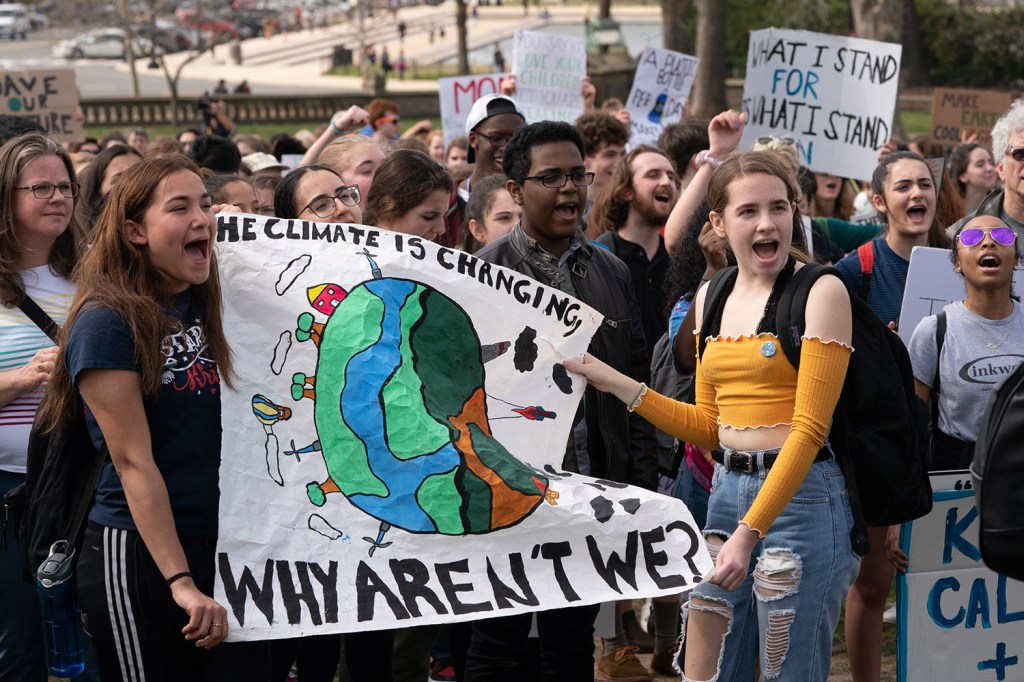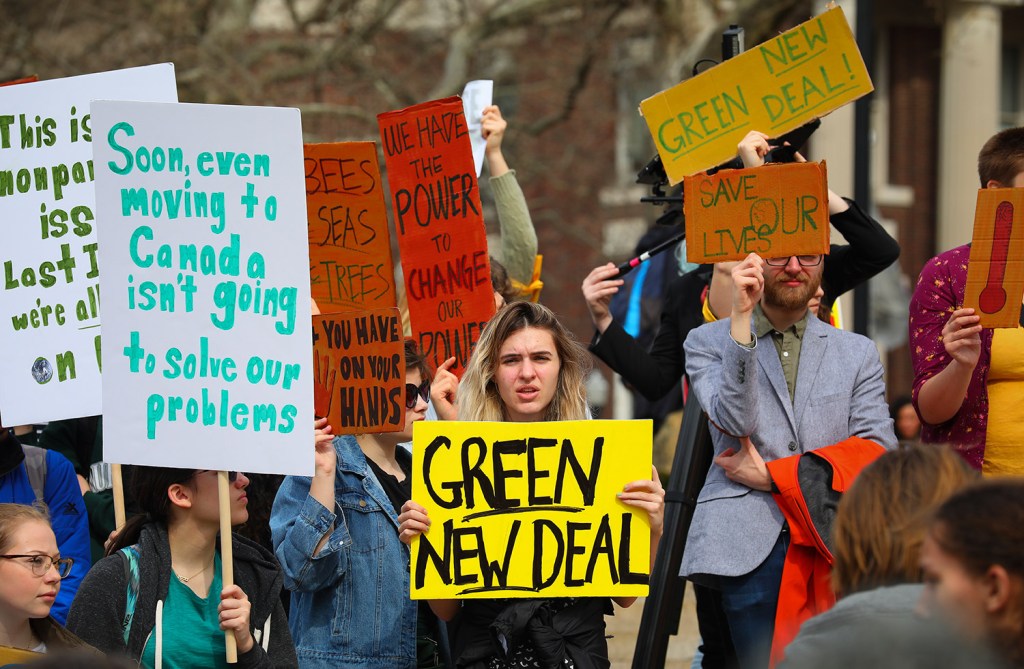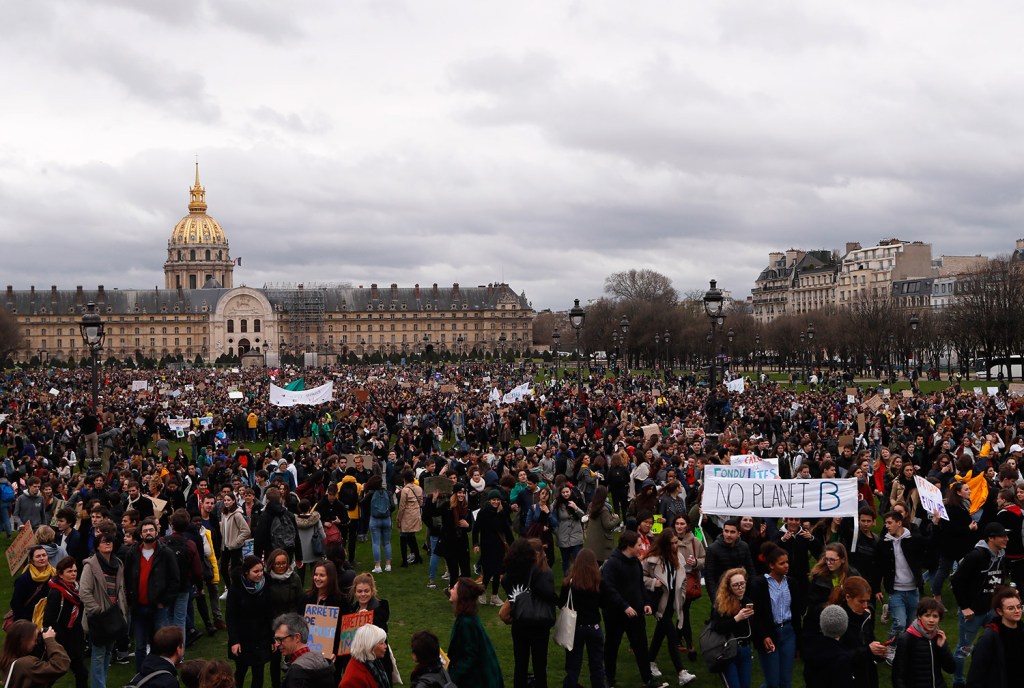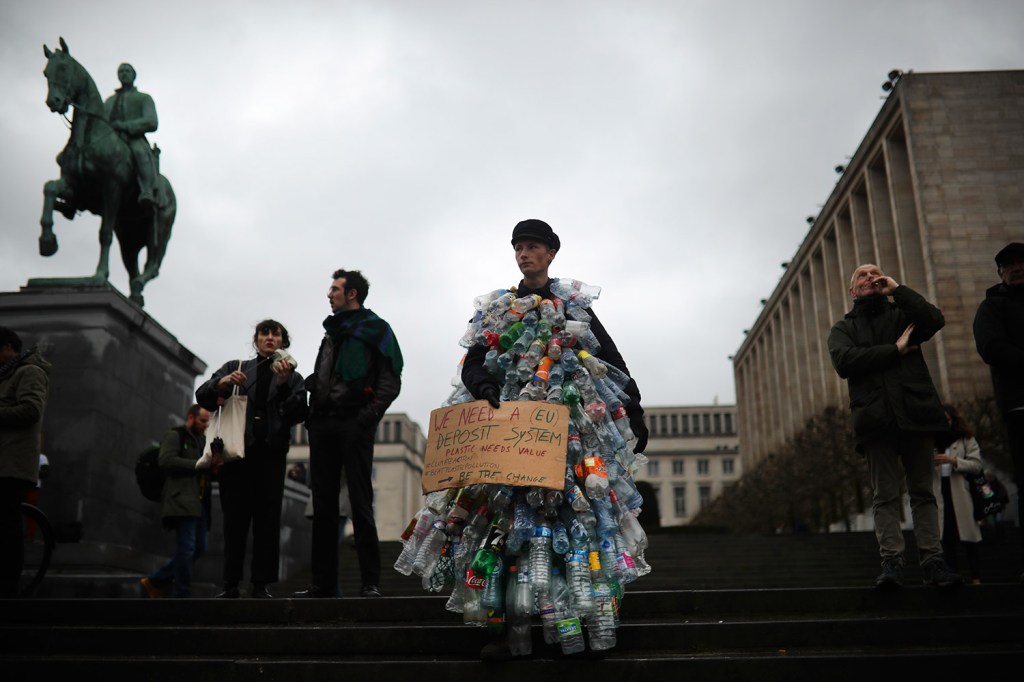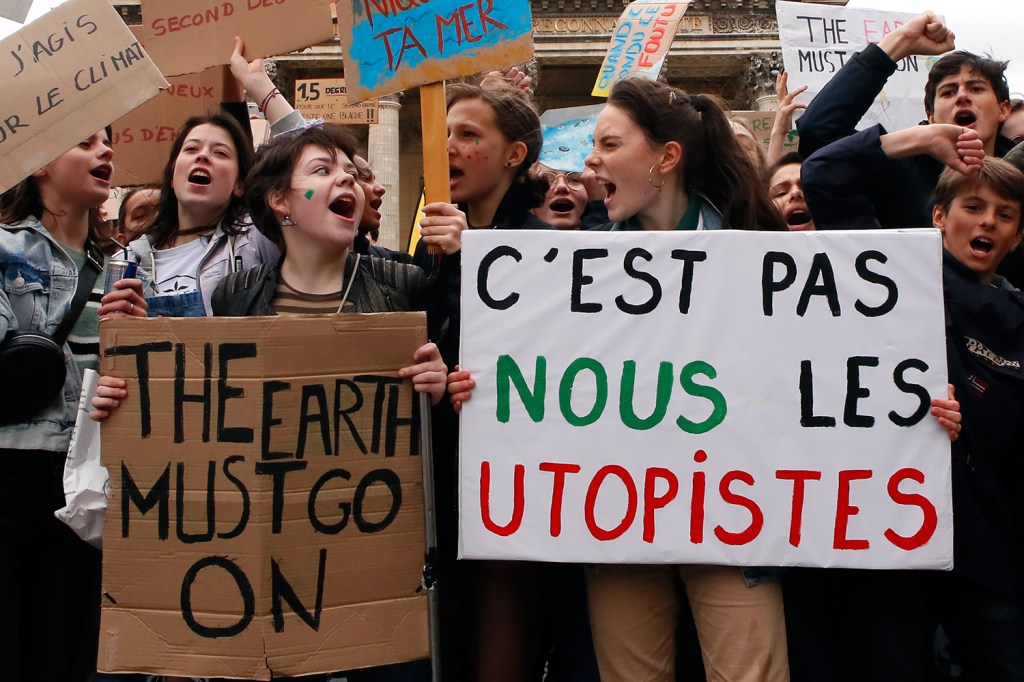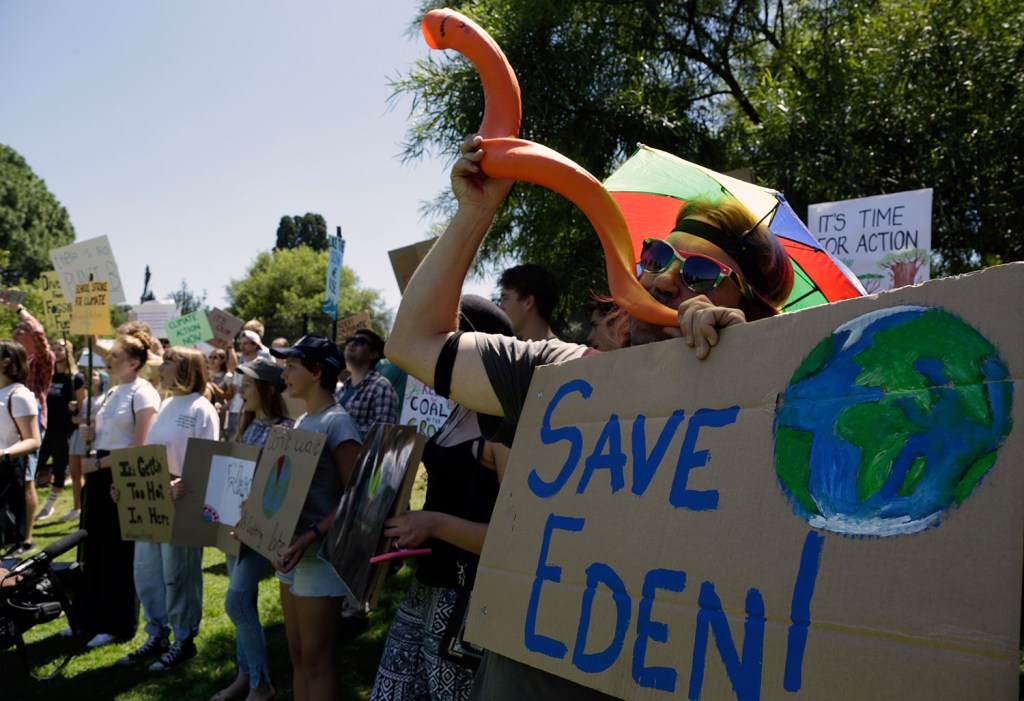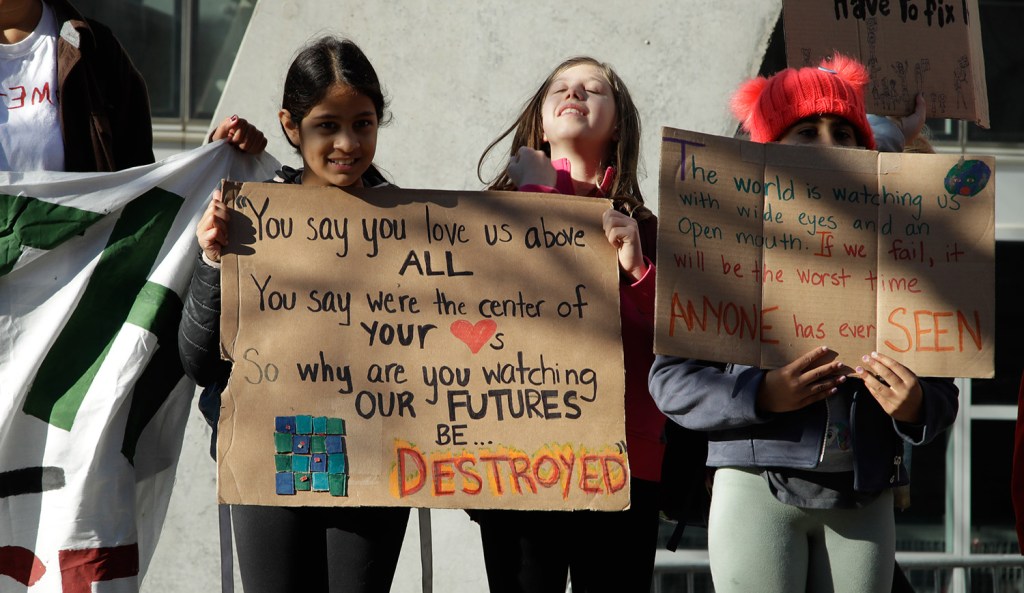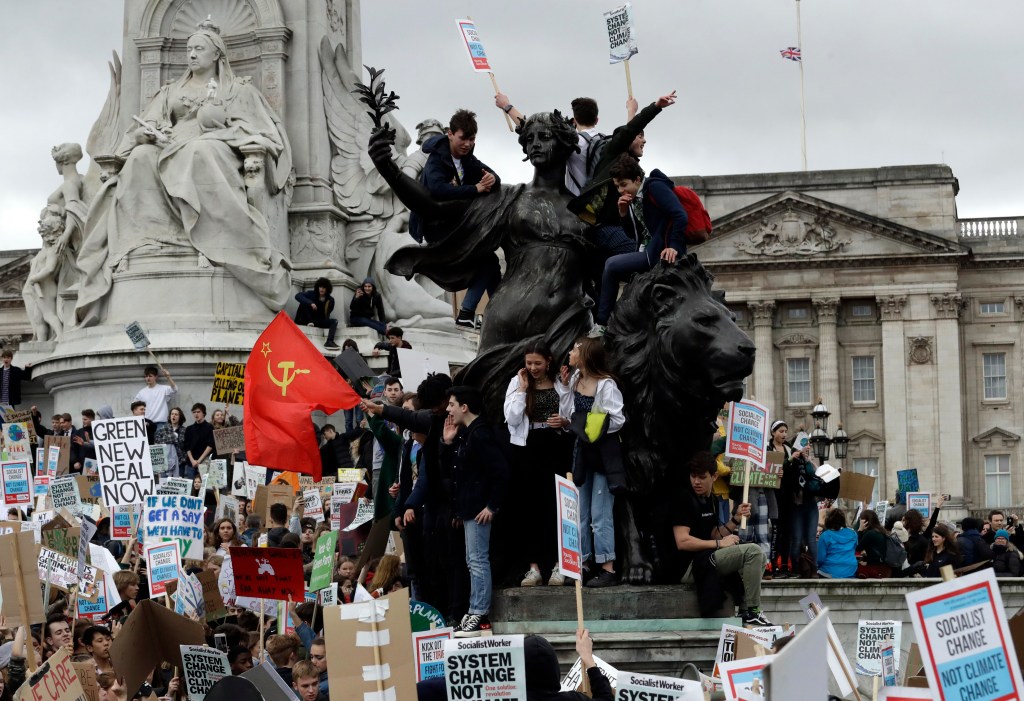BERLIN – A movement that began with a single teenager distributing homemade fliers outside the Swedish parliament last summer became a global phenomenon on Friday, as students worldwide skipped school and took to the streets to urgently demand that adults combat the perils of climate change.
Starting in the South Pacific and moving west with the sun, the protests blanketed grand city centers and humble village squares. Organizers said they were expecting demonstrations in at least 112 countries, in more than 1,700 locations.
The coordinated demonstrations were planned as the largest manifestation to date of the Fridays for Future movement, in which students forgo classes each week in favor of something they have said is more important: pleading for action on an issue that will affect every person on the planet, but young people most of all.
“You’re stealing our future!” an estimated 20,000 demonstrators chanted outside the German government ministry in Berlin that sets energy policy.
The adults most responsible for the ravages of climate change “are going to be gone soon enough,” said 14-year-old Ashton Assa, who was on the streets of Sydney on Friday with an estimated 30,000 other Australians. “It is up to us kids to make a difference.”
Cassa held a placard reading “Stop the Fossil Fools” – a reflection of the contempt protesters have shown for the grown-ups who call the shots, and who are widely seen as having reacted with complacency and caprice to the world’s gravest threat.
Despite their frustration, the protesters have been consistently peaceful – as was the case on Friday. Their message has been delivered respectfully, but also with an exasperation and urgency that reflect the stakes.
U.N. researchers have said the world has only the next dozen years to halt the most catastrophic impacts of climate change. These effects, they say, include rising seas that inundate cities, crop failures that spawn famines and more severe and frequent weather-related disasters that ravage communities and cause billions of dollars in damage. But politicians remain far off track in their efforts to address the issue.
“Since our leaders are behaving like children, we will have to take the responsibility they should have taken long ago,” Greta Thunberg, the Swedish teen who launched the movement, told a U.N. climate gathering in December in a speech that, with equal parts clarity and audacity, rocketed her to fame.
“I don’t want your hope,” Thunberg, her hair braided in pigtails, told the world’s elite at Davos a month later. “I want you to panic.”
The 16-year-old, who started protesting by herself in Stockholm, has inspired young people around the world to follow her example. Protests have been especially large in European capitals, but Friday’s demonstrations were expected to include large gatherings on every inhabited continent.
“The first day I sat, I was all alone,” Thunberg has said. Now, “it’s amazing to talk to these people who are doing the same thing and fighting for the same cause . . . all around the world.”
Students on Friday were joined by parents, educators and other concerned adults. But the demonstrations were dominated by youth of high school age and younger, who planned, organized and led the rallies, marching on the front lines, bullhorns in hand.
An estimated 150,000 people turned out in dozens of demonstrations across Australia. Protests were also held in cities across Asia, but were comparatively smaller.
In Europe, capitals such as Berlin, Paris and London were filled with placard-wielding students who had packed into trains and subways to reach the demonstrations. Tens of thousands of people were estimated to have turned out in each of those cities.
“I can’t learn if I’m dead,” read one among a sea of handmade cardboard signs that the demonstrators brought in Berlin.
“Make the earth cool again,” read another.
The protesters overflowed a park that was set aside for the occasion and marched for hours through the city under overcast late-winter skies.
Some said the demonstrations have become so popular that to be in school on a Friday during a protest was the exception, not the norm.
“The last time, only four people were left in class, and I didn’t want to be one of them,” said 18-year-old Berlin resident Enrico Csonka.
In Paris, the march started at the symbolic Place du Panthéon, the site of the French Republic’s mausoleum for its most cherished citizens.
The students climbed atop bus stations, hung onto streetlights and chanted: “One, two, three degrees. It’s a crime against humanity.”
“There’s no point taking the bac if we have to graduate into a world that’s on fire,” said 15-year-old Maelis Clain, referring to the baccalauréat, the French prerequisite for finishing high school.
A large, boisterous crowd – chanting, “Solutions, not pollution” – marched through central London, weaving by landmarks such as Downing Street and Buckingham Palace.
Amelie Ashton, 15, held aloft a sign that read: “I can’t swim.”
“There are people who will be underwater in the next 50 years, and we’re acting like there’s not a problem,” she said. “This is huge. This is now and we need to make a change.”
As the protests in Europe wound down, they ramped up in the United States. The planned strikes spanned the country, from Fort Lauderdale, Fla., to Bellingham, Wash.
Friday marked 13-year-old Alexandria Villasenor’s 14th week striking in front of the United Nations headquarters in New York. Since December, she had sat there alone through rain, snow and the polar vortex to demand aggressive action against climate change.
But on Friday morning, roughly 50 middle and high school students were protesting with her.
Last month, as the Fridays for the Future protests ballooned into a weekly event in Europe, Villasenor had lamented the relative lack of climate activism in the United States. She expressed anger at President Trump’s decision to withdraw the country from the Paris climate accord and frustration with her peers’ seeming lack of concern about the issue.
But with 12-year-old Haven Coleman and 15-year-old Isra Hirsi, Villasenor helped orchestrate protests in all 50 states on Friday. There were 10 planned for New York alone, with a culminating rally at Columbus Circle.
“Today, we are declaring the era of American climate change denialism over,” she declared to the morning’s crowd at the United Nations, reading a speech she had handwritten on loose-leaf paper. For all the urgency and fever among the young people filling streets, descending on capital buildings and protesting outside the offices of local and national leaders, real questions remain about whether their protests will spur action from policymakers.
Thunberg and others have said they were inspired by students from Parkland High School who became activists after last year’s deadly shooting at their school. But those efforts, along with a massive youth-led demonstration last year in favor of stronger gun laws, known as March for Our Lives, have not yet led to legislation.
One of Friday’s first planned demonstrations – in Christchurch, New Zealand – had to be cut short when a heavily armed gunman attacked a mosque. The massacre of at least 49 people brought together two scourges that have been the ominous background to young people’s lives worldwide: mass shootings and a warming planet.
Many young climate advocates in the United States have said they want to see the so-called Green New Deal – or pieces of it – embraced by lawmakers. But so far, Democrats themselves have remained divided over the ambitious proposals, and many Republicans, including President Donald Trump, have mocked them as absurdly expensive while also deriding the idea of man-made climate change as “a hoax.”
Still, the teens have won the backing of many leading environmental groups, including Greenpeace, the Sunrise Movement and 350.org. This month, more than 250 scientists released a letter of support for the school strikes.
Penn State climate researcher Michael Mann, who helped coordinate the letter, said it would be a “moral failing” if adults did not bolster the young activists’ message.
“These kids are putting themselves out there, on the line, risking so much, because they know better than any of us what the stakes are: nothing less than the future of human civilization,” he said.
In Europe, where the climate strikes have been filling plazas in capital cities for months, leaders such as German Chancellor Angela Merkel have endorsed the movement.
But other politicians have mocked it. Christian Lindner, leader of a pro-business party in Germany, urged students to stay in school and dismissively offered that “politics is for professionals.”
Across Germany on Friday, more than 180 individual strikes were planned, according to 22-year-old organizer Luisa Neubauer. On Friday, she and thousands of others gathered in a park in front of the country’s Economics and Energy Ministry. Neubauer said their aim was to pressure politicians to meet the country’s carbon reduction targets – targets that Germany is now on track to miss.
“It doesn’t make sense to put out targets and not move anywhere near them,” said Neubauer.
Climate strikes have a long history in Germany, most notably contributing to the rise in the 1980s of the country’s Green party, which is now a major force in German politics.
But this is the first time a climate movement is being led by people who are not even yet eligible to vote, according to Sabrina Zajak, a youth researcher at the German Center for Integration and Migration Research.
The movement has already had an impact on the way politicians discuss climate politics, Zajak said. In negotiations, she said she has noticed them increasingly wield a new rallying cry: “We need to do it for the youth.”
Send questions/comments to the editors.


